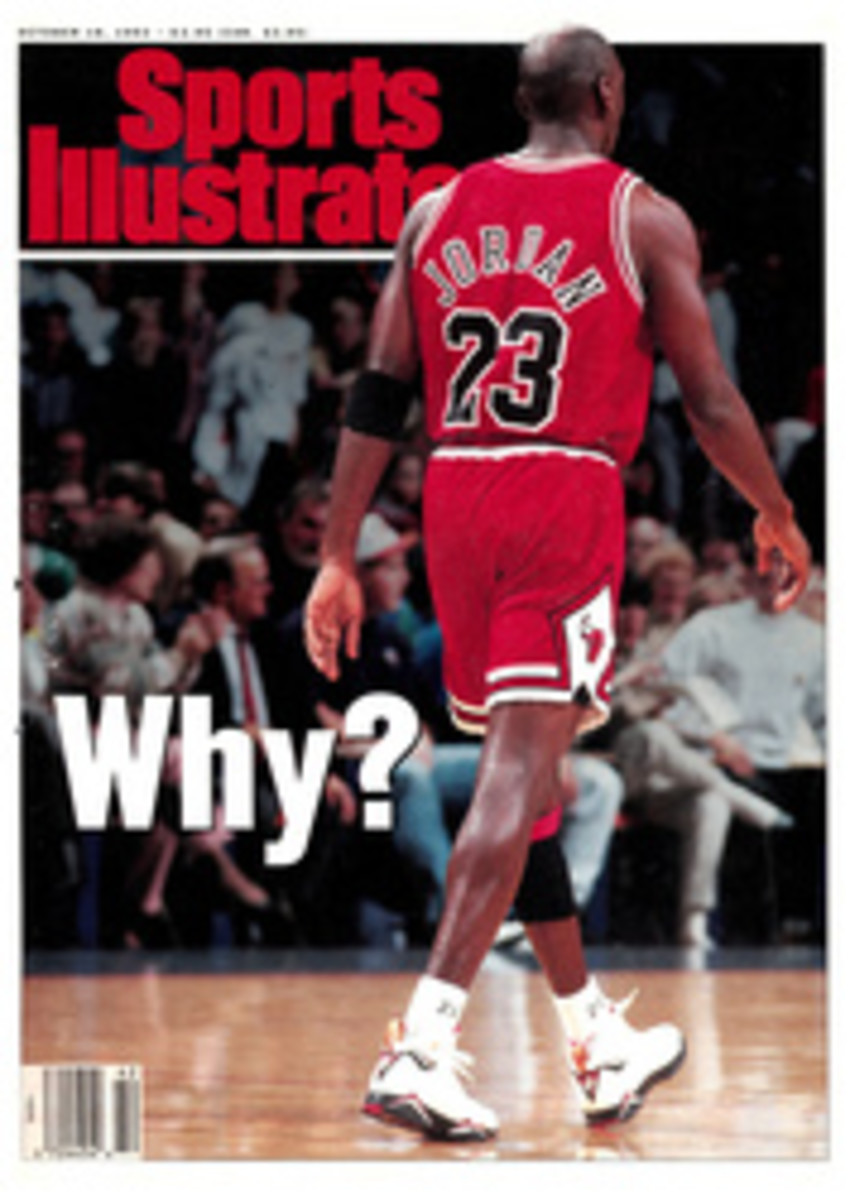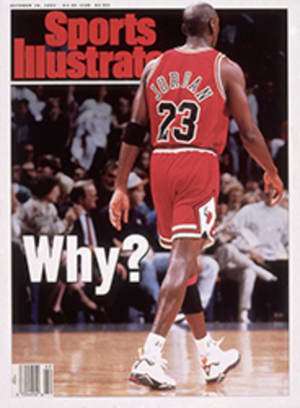
Old Masters to Go
The term often used to describe the people who make the annual late-August drive to Monterey, Calif., for the Historic Automobile Races at Laguna Seca is enthusiasts, though most answer to the less charitable car nuts. The weekend—which includes a multimillion-dollar auction and a Concours d'Elègance (a competition covering authenticity and condition) at Pebble Beach on Sunday—is part subculture and part harmonic convergence. Yet it isn't necessary to know a head gasket from headcheese to get caught up in the romance of the event. Could even the most hardened advocate of mass transit fail to be transported by the gleaming grillwork and big, round eyes of a 1930 V16 Sport Phaeton Cadillac?
There's probably no way of actually proving that the decline of Western civilization commenced with the virtual disappearance of the hood ornament, but this is just the sort of idea that is taken as an article of faith by the pilgrims in the paddock at the Historic, which celebrated its 20th running at the Laguna Seca Raceway from Aug. 20 to Aug. 22. The event has grown so big that its creator, Steven Earle, 53, selects a field of about 350 starters from more than 1,000 entries; those deemed not yet ready for prime time are asked to show up a week early for a sidecar event called the Pre-Historic.
The featured marque at this year's races was the Miller, named for the long-forgotten designer Harry Miller, whose innovative creations influenced the earliest American racing cars. The Smithsonian Institution sent a 1929 Miller from its collection, and another was displayed with a replica of one of the high-banked wooden tracks on which the cars raced in the early part of this century. On Saturday, 15 Millers paraded around the circuit, the most astounding of these a 1917 model known as the Golden Submarine that more closely resembled a rolling Fabergè egg.
"They are works of art, but the cars are meant to be driven," says Charles Queener, 50, a graphic designer from Stamford, Conn., and a friend of Earle's who has designed a number of Historic programs over the years. "The idea is not to make museum pieces out of them." Nevertheless, hitting the finish line first in these races is not of utmost importance; getting there in style is what it's all about. The first race of the weekend reflected the ingenuity of the small-scale architecture that was once the hallmark of American automotive design. There were three 1934 Morgans that looked like amoebae, skittering around on three wheels—two in front and one in back. Two entries carried pilot and copilot, both goggled, and at the back of the field was a magnificent 1912 Franklin, steaming elegantly along like a yacht. Several of the cars in the field had gone for their first drives during the administration of Woodrow Wilson.
"It's theater," Earle says. "This is The Phantom of the Opera of the car world. But the basis of the event is educational. We do it to encourage the restoration of these old cars." In many instances the races have a similarly restorative effect on the drivers, who are often of an even earlier vintage than the cars. John Sutton drove a 1952 Jaguar XK-120 in one of Sunday's races, having celebrated his 73rd birthday the day before.
The pits at a vintage-car race are full of stories, many of them lovingly detailed in these gassiest of gasoline alleys by proud Packard proprietors, men in Morgans, and the occasional Duesenberg devotee. One of the most popular cars at Monterey this year was the 1,100-horsepower Porsche 917/30, flown in from the Porsche Museum in Stuttgart, Germany, and driven for several ceremonial laps by 26-year-old David Donohue, son of the late Mark Donohue. This beast was driven by the older Donohue to six victories in eight Can-Am races in 1973 and is considered by some to be the most dominating race car of all time.
If few of the cars could match accomplishments with this daunting ‚àö√∫ber-Porsche, they were all considered equal in the eyes of the race organizers. "There are some real rich people here," said Craig Morningstar, an Orlando, Fla., publicist, who represented Alfa Romeo, the Italian car company, "but they're not all rich. There are a lot of beat-up pickup trucks towing cars here. And Steve doesn't segregate people based on the cost of the car they're driving."
David Love, from Berkeley, Calif., bought his Ferrari Testa Rossa for $4,600, in 1964. But when he discovered what bad shape the car was in, he tried—unsuccessfully—to get his money back. The derelict carcass was restored by using a three-by five-inch photograph of the Ferrari as it once looked and pieced together with scavenged parts as if it were a three-dimensional jigsaw puzzle. It took Love 20 years to restore the Ferrari to the condition it had been in when it raced at Le Mans in 1958.
Love, 57, was one of three drivers in Monterey who had raced in all 20 Histories, making him something of a historic himself. He drove this year despite a severe tremble brought on by the Parkinson's disease from which he suffers; his only concern before the race, however, seemed to be upholding the honor of the Ferrari. "I've been driving the car for 29 years, so she's like an old friend," Love explained. "Sometimes I'm a little embarrassed about what an obsession it's been, and how the car has run my life. But maybe it's not so much what you care about as how you care about it. And how that affects your life."
Love, a former physicist who does all his own mechanical work, decided long ago that grease under his nails didn't make his love of old cars any purer than anyone else's. At a race several years ago he asked a man who had made his fortune in the grocery business—then spent part of it buying a classic Maserati birdcage race car—what type of carburetors he was using. "Don't ask me about carburetors," the man replied, "I don't know anything about carburetors. If you want to ask me about something, ask me about prunes!"
Love's Testa Rossa would be worth at least $2 million if he wanted to sell it, which he doesn't. A few years ago, when vintage cars were approaching the stratospheric price range of a nice little Van Gogh, it was probably worth twice that amount. "I try not to care about it," Love says. "The financial value of this car is not what matters to me. But I can afford to be sanctimonious, because I got it for forty-six hundred bucks."
However indelicate its presence, commerce has always been a part of the weekend, even when it is only the slightly disorienting sight of a hand-lettered FOR SALE sign taped to the windshield of a car for which the asking price is $115,000. In 1986 Earle was approached by two dealers who wanted to use the Laguna Seca setting for a vintage-car auction that would become part of the weekend's official activities. "I knew there was a lot of horse trading going on at the races," says Rick Cole, one of the dealers. "I told Steve he was selling millions of dollars worth of cars in his parking lot."
Typically, Earle wanted no part of anything that would diminish the purity of the weekend, contending that while auctions raised the reward for restoration, they had the effect of putting the cars out of the reach of all but the wealthiest enthusiasts. "I nearly had a stroke when the auction guys came in," Earle says. He rebuffed Cole, who simply moved the auction to a downtown hotel.
Going for the throat may be acceptable at an auction, but it is considered wildly inappropriate on the racetrack. During the first Historic, the driver of a Ferrari 750 Monza flipped several times, and another Ferrari 512 was involved in a separate mishap. "Those two incidents made people take notice that there was no reason for that kind of conduct," Queener said. Since then the rules have been simple: If a driver goes off the course, he or she is pulled over and told to drive safely. If a driver hits another car—no matter what the reason—he or she is not invited back the following year. Earle never gives trophies for first place, but he does award prizes for enthusiasm.
"It doesn't matter who finishes in front," Love says. "All the history has been written on these cars, and we're not going to add anything to it. I don't really own this car, I just get to sit in it. I'm its custodian, sort of like a docent. And it will outlast me."
PHOTO
JOHN BURGESS
The Historic awards prizes for a driver's enthusiasm rather than for a first-place finish.
TWO PHOTOS
JOHN BURGESS
Love labored over his '58 Testa Rossa for 20 years; top, a Lalique crystal hood ornament

